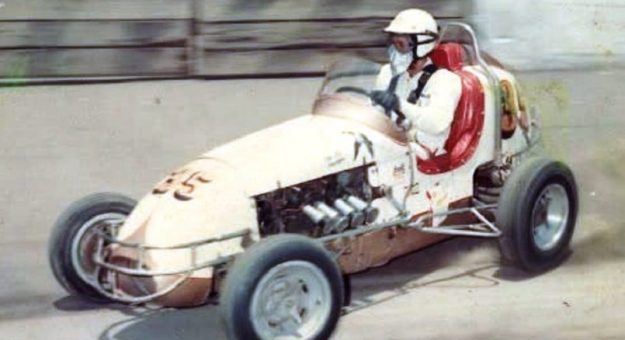Bob Tattersall grew up tough.
Born on July 27, 1924, Tattersall was only seven years old when he saw his younger brother get hit and killed by an automobile; and the Great Depression molded his formative years. Just months out of high school, WWII broke out and he joined the Army.
When Tattersall and a buddy went AWOL for a couple of weeks, they volunteered for the 82nd Airborne, reasoning it’d prevent them from being disciplined. It did, but Tattersall landed in the middle of the war’s fiercest battles.
He parachuted into Normandy, the Ardennes Forest and the Rhineland. He shattered his knee in a jump into Belgium and a local family hid him from the Nazis. Captured another time, he escaped.
Before being discharged, Tattersall had received a Purple Heart, the Bronze and Silver Stars and a Presidential Citation for bravery.
Back in civilian life, Tattersall turned that warrior spirit toward auto racing and rose to icon status.
Starting in stock cars on the short tracks around his Streator, Ill., hometown, he won 27 of 29 features in one stretch and gravitated to the cars that carried him to the Hall of Fame — midgets.
Racing with the United Auto Racing Ass’n at Chicago’s Joliet Stadium, his winning caught the attention of Frank Paverse, who owned a fleet of midgets powered by Ford V-8 60 engines.
Tattersall, in one of Paverse’s cars, proved nearly unstoppable, dominating the dirt tracks that dotted the Midwest. At Daytona, during Speedweeks in 1957, he won three of the four NASCAR midget events.
He was such a “B” circuit force that he gained the nickname, “King of The Outlaws.”
In 1955, Paverse put him up against the intense AAA competition at Indiana’s Terre Haute Action Track. Tattersall took the checkered flag in his 10-lap heat while second-place Rex Eaton was entering turn three. Tattersall won the feature as well.
He won UARA titles in 1957 and ’59. However, 1958 was Tattersall’s milestone season. That’s when he made his maiden trip to New Zealand and Australia.
He became a star Down Under and was very much the catalyst for dramatically increasing the popularity of midget racing in those countries. They nicknamed him “Two Gun Tattersall” because he showed up in cowboy boots and western clothing.
The press loved him as even the mainstream media covered him extensively.
Empire Speedways director John Sherwood told of taking Tattersall to lunch at the rather stuffy Royal Automobile Club of Australia in downtown Sydney.
“He was dressed in cowboy attire,” recalled Sherwood, “and it didn’t take long for him to become the center of attention as he preached the virtues of midget racing to his awed audience. He was bawdy and profane, but his charisma made him an instant celebrity. That grew the sport tremendously.”
In 13 trips to Australia, Tattersall won an astounding 50 percent of his races. Those trips typically extended into the beginning of the USAC season. Though he often won more features than the USAC champion (he amassed 63 USAC victories), the missed races cost him championships. He finally captured the well-deserved title in 1969.
Like most racers of that era, Indianapolis was on Tattersall’s horizon. He got a shot at the speedway in 1966, driving a car of questionable quality. Predictably, he didn’t qualify.
His prospects for 1967 were better, but after days of intense pain, his buddy, Bobby Grim, hauled him to Methodist Hospital. A cancerous kidney was the problem. Its removal aborted that year’s speedway run and he never returned there.
Tattersall was a fabled partier, generating stories of near-mythical proportion. One year in Australia, he’d severely burned his legs. When he didn’t show for a post-race pool party, everyone assumed he was trying to heal.
Suddenly, on the roof of the motel, he appeared. With a towel for a cape and plastic bags tied to his legs to protect the burns, he plunged into the pool.
The cancer returned, but Tattersall kept racing. He ran his last race at Australia’s Liverpool City Raceway in late April 1971. He died on Oct. 27.
